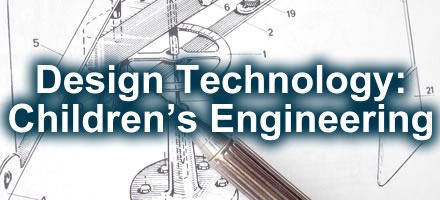
Summary

John Dewey: “Unless one does it for one's self, it isn't thinking.”
A paradox of education is evident when we say we want students to become good problem solvers but then we don’t give them good problems to solve. We give them instructions to follow, we give them projects to build, we give them experiments to perform but we know from the outset what results we want to see at the end. That’s not problem solving. Design technology is problem solving. And elementary schools should be doing more of it in order to improve problem-solving skills as well as to encourage more American students to pursue science and engineering careers.
This website includes design technology projects linked to major themes in engineering. All the units support national and state standards. They include materials lists, procedures, student data sheets and assessment strategies. The units vary in grade level and can be modified up or down.
About the Project
It comes as no surprise that elementary schools have suffered a disheartening decline in the amount and depth of science education. It is particularly acute in terms of physical science and engineering. During my Kenan Fellowship, I have had a chance to make small inroads into this situation. I have created teacher friendly project that will, I hope, increase the comfort level of teachers. Comfortable teachers are more likely to embrace physical science and engineering opportunities with their students. And students need it. Schools have focused intense resources on math, writing and reading because those are tested subjects and the stakes, of course, are high. Few resources are being expended on science education, though that is about to change with the No Child Left Behind legislative demands. Reform based science documents stress the importance, indeed primacy, of inquiry based learning. This poses quite a problem. Experienced elementary school teachers in general have little science background and grave doubts about their ability to teach any kind of science, especially physical science. Precious few have any experience at all with engineering. Students are the ones who feel the impact of this lack of comfort and experience. They have few opportunities to use physical science and engineering to examine problems and craft solutions. And yet, as stated by Benchmarks:
Through design and technology projects, students can engage in problem-solving related to a wide range of real-world contexts. By undertaking design projects, students can encounter technology issues even though they cannot define technology. They should have their attention called to the use of tools and instruments in science and the use of practical knowledge to solve problems before the underlying concepts are understood.
AAAS, Project 2061 (1993) Benchmarks for Science Literacy. New York: Oxford University Press http://www.project2061.org/tools/benchol/ch3/ch3.htm#NatureOfTechnology

